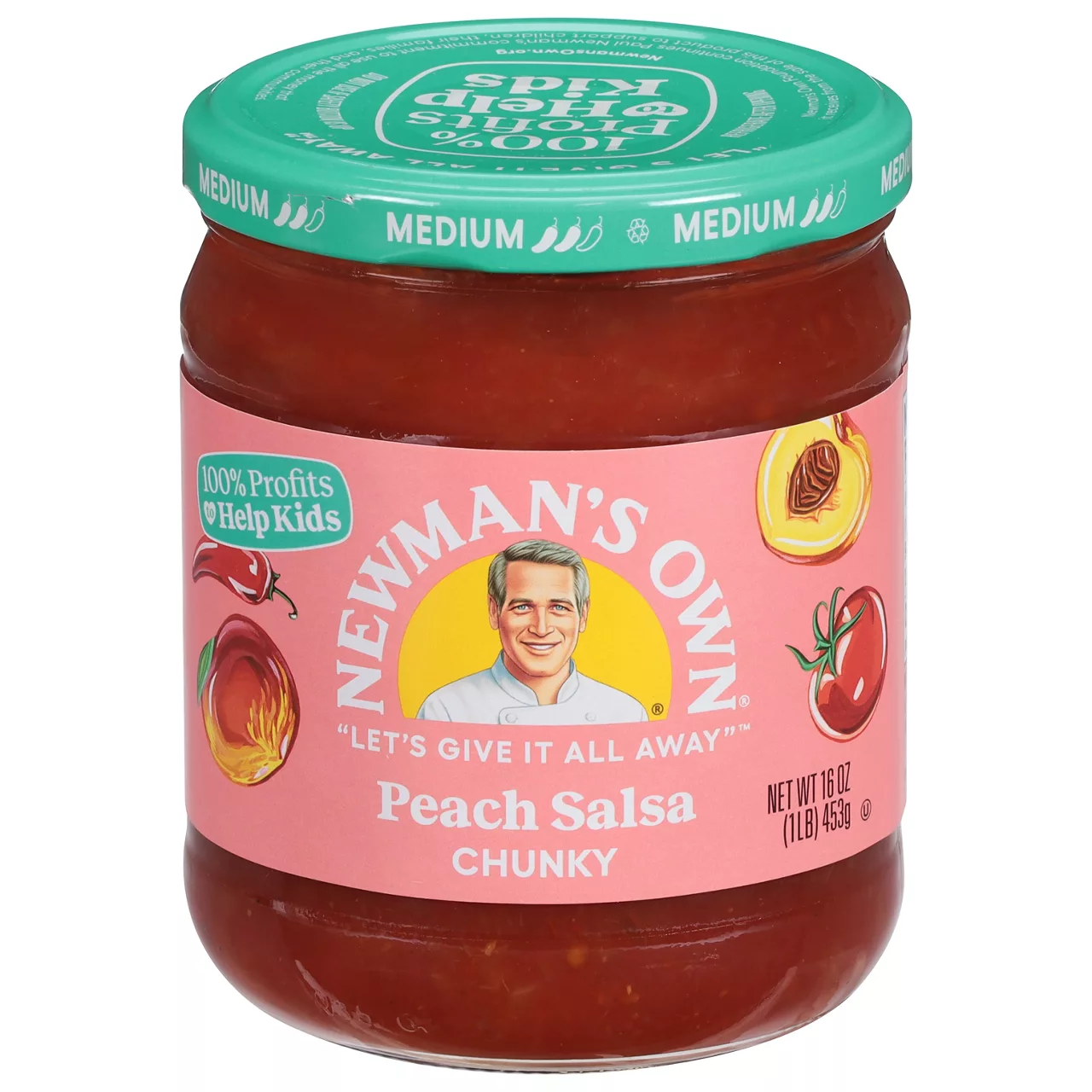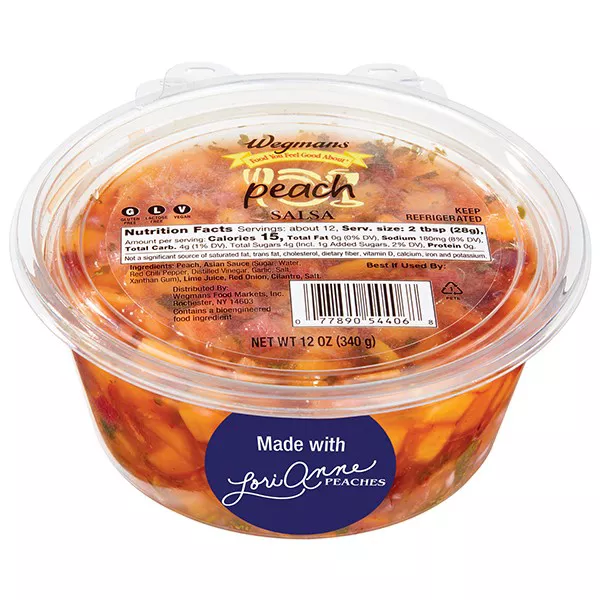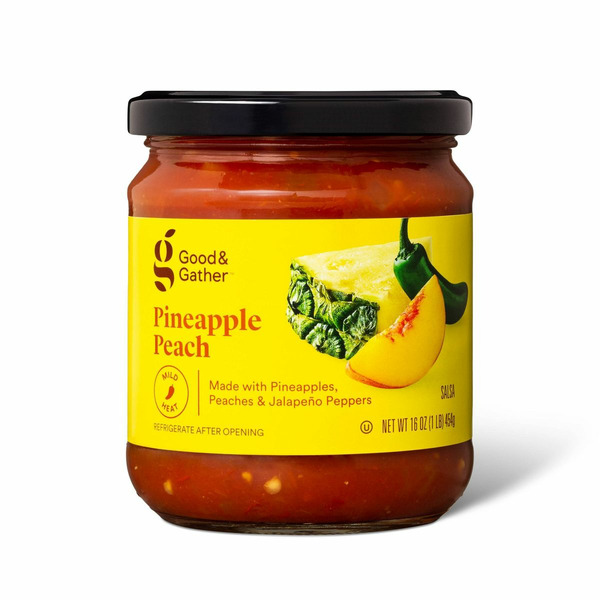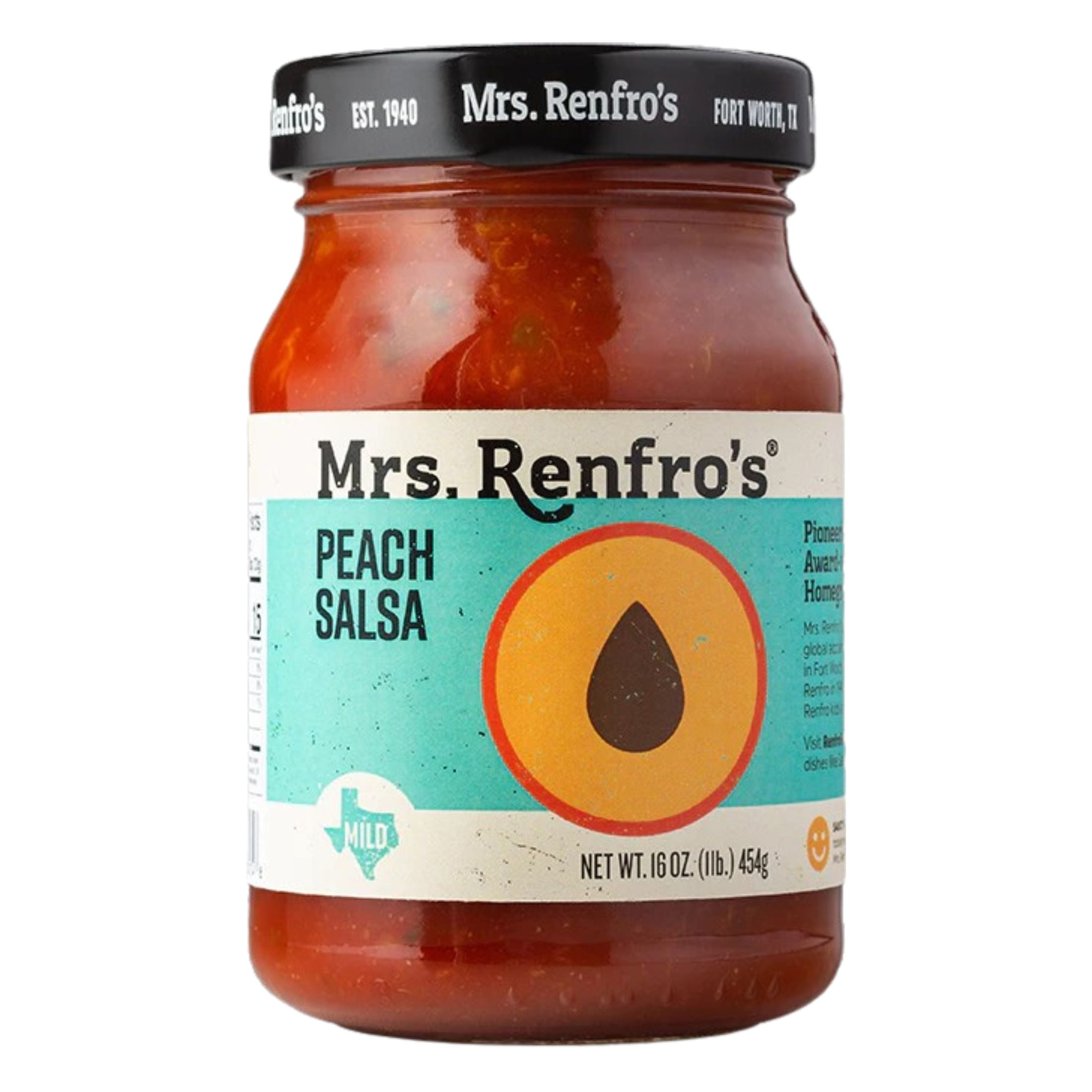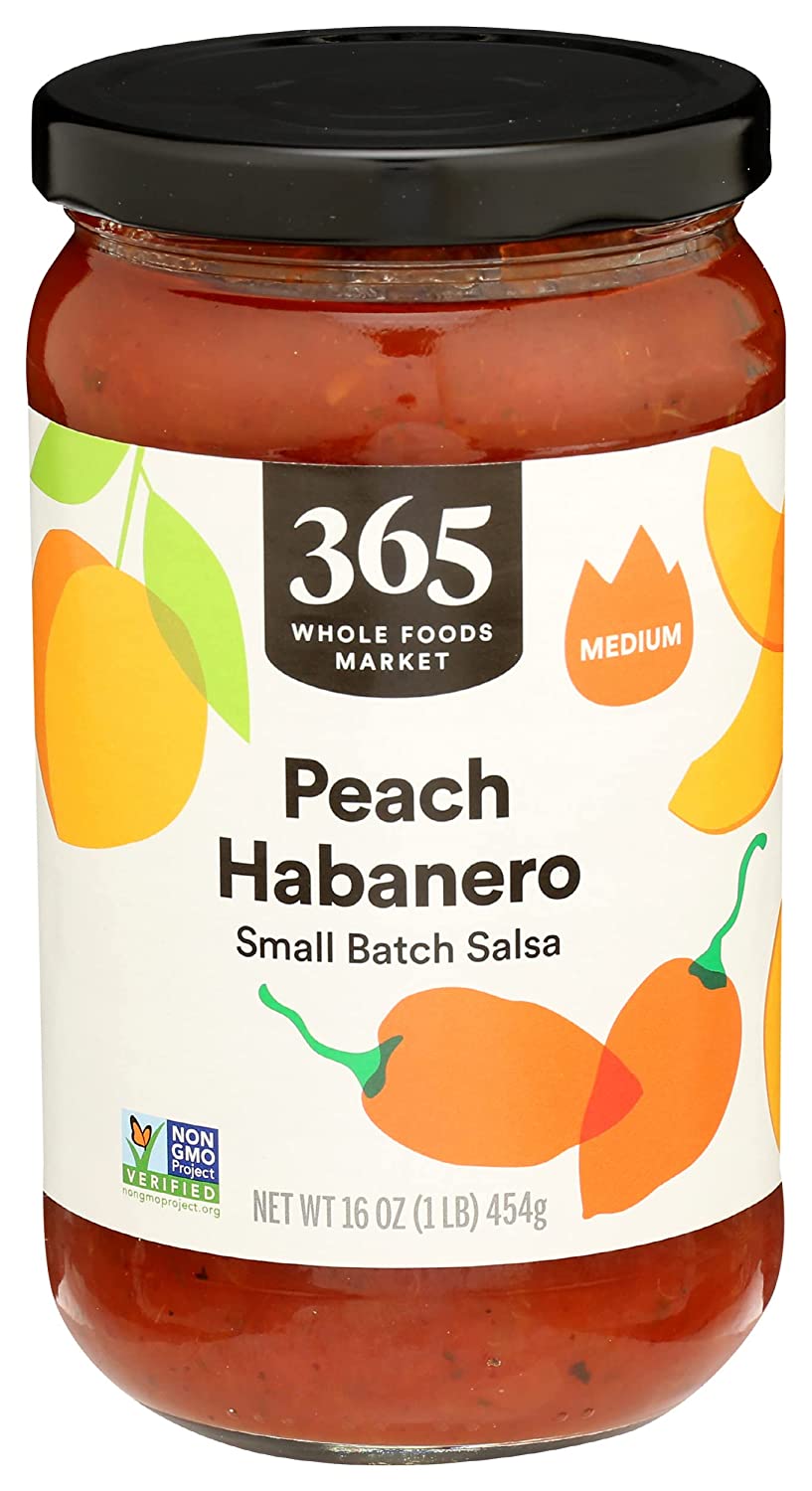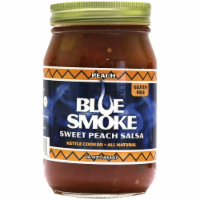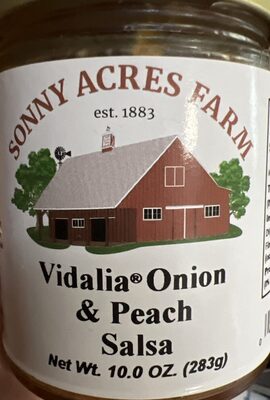CONDIMENTS AND SAUCES
Peach Salsa
Peach salsa is a refreshing and versatile condiment featuring fresh peaches that are combined with other ingredients to create a sweet and tangy salsa. Originating from the fusion of Mexican and American cuisines, this delightful dish finds its place in several culinary items like appetizers, main courses, and desserts. The juicy peaches strike a perfect balance between sweetness and acidity, making peach salsa a popular choice for summer dishes and gatherings.
To prepare peach salsa, ripe peaches are diced and mixed with jalapeño peppers, onions, cilantro, and lime juice. The mix of flavors provides a delightful taste and texture suitable for topping or accompanying various dishes, such as grilled chicken, fish, or pork. Additionally, it can be enjoyed with tortilla chips as a fresh, fruity twist to traditional tomato-based salsas.
100%
CARBS
0%
FAT
0%
PROTEIN
176 Peach Salsa Products
Newman's Own Salsa, Peach, Medium, Chunky
Wegmans Peach Salsa
Good & Gather Mild Pineapple Peach Salsa
Mrs. Renfro's Peach Mild Salsa - Case of 6
H-e-b Central Market Mild Peach Salsa
Mild Pineapple Peach Salsa
Mrs. Renfro's Salsa, Peach, Mild
365 by Whole Foods Market, Salsa Peach Habanero, 16 Ounce
Blue Smoke Sweet Peach Salsa
Sonny Acres Vidalia Onion Peach salsa
Peach Salsa Is Frequently Used With
Peach Salsa FAQ
Cooking with peach salsa is fun and versatile. However, there are some common questions and issues people might encounter. Choosing the right type of peaches can make a great difference. Late-summer freestone peaches work best because they separate easily from the pit and hold their shape when diced. On the other hand, clingstone peaches, as the name implies, are harder to separate from the pit and can turn mushy when diced, leading to a less desirable texture. Also, the ripeness of the peach is key. Overripe peaches can turn your salsa too sweet and mushy while underripe ones won't yield the desired sweetness.
Getting the most out of peach salsa involves knowing which dishes it complements best. It adds zest to grilled meats like beef, pork, chicken, and fish. It also works well with eggs, toast, and salads. Peach salsa isn't just for savory dishes, it can be added to desserts too, lending a unique tang and burst of fresh flavor.
A little-known tip is to include a dash of cinnamon or cloves to your peach salsa. With the right amount, these spices can highlight the peach's sweetness without overpowering the entire salsa.
How to get perfectly diced peaches for peach salsa?
My peach salsa is too sweet, what can I do?
Is peach salsa only good for chips?
Can I use canned peaches to make peach salsa?
What should I do if my peaches are not ripe enough?
Can I make peach salsa without cilantro?
I want to add a new twist to my peach salsa. Any ideas?
Can I blend peach salsa?
What kind of dishes does peach salsa go well with?
What type of peaches should I use for making peach salsa?
Expiration & Storage Tips
When does peach salsa expire?
The variety and freshness of ingredients in peach salsa highly influence its expiration. A newly prepared homemade peach salsa can last up to 5 days in the refrigerator, provided it's stored correctly. Unopened peach salsa bought from stores will have an expiration date on the package and can generally last about 12-18 months if unopened and stored in a cool and dark place, while an opened jar should be consumed within 2 weeks. If peach salsa is frozen, it has the potential to last around 2 months but the texture may suffer upon defrosting
How do you tell if peach salsa is bad?
Identifying spoiled peach salsa is quite simple. Visible signs of mold or yeast growth on the surface of the salsa are clear indications of spoilage. Bad peach salsa will also smell different, often unpleasantly so, and taste sour. The salsa may appear mushier than usual and have a darker color than the vibrant golden-orange color typical of fresh peach salsa.
Tips for storing peach salsa to extend shelf life
• Always refrigerate peach salsa, homemade or store-bought, to preserve its freshness and extend its shelf life.
• Store salsa in a jar or airtight container to maintain the flavor and prevent cross-contamination from other foods in the fridge.
• Avoid repeatedly removing peach salsa from the fridge, as the constant fluctuation in temperature can spoil it faster.
• If properly sealed and stored, peach salsa can be frozen, although freezing might deteriorate the texture. To defrost, place the container in the refrigerator a day before you plan to use it.
• Use a clean spoon or utensil every time you scoop peach salsa to avoid bacteria growth.
EXPIRES WITHIN
9 - 15
MONTHS
Equivalents
Substitutes

Mango Salsa

Chipotle Pineapple Salsa

Pineapple Mango Salsa

Pineapple Salsa

Tropical Salsa

Chunky Medium Salsa

Chunky Mild Salsa

Roasted Tomato Salsa

Chipotle Salsa

Cilantro Salsa
See All
Health Info
Macros
7g
CARBS
0g
FAT
0g
PROTEIN
Allowed on these diets
LOW FAT
HIGH CALCIUM
VEGETARIAN
PALEO
WHOLE 30
MEDITERRANEAN
LOW CARB
VEGAN
LACTOSE FREE
GLUTEN FREE

